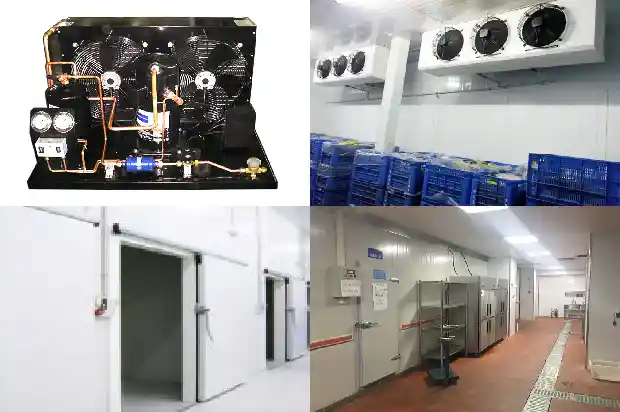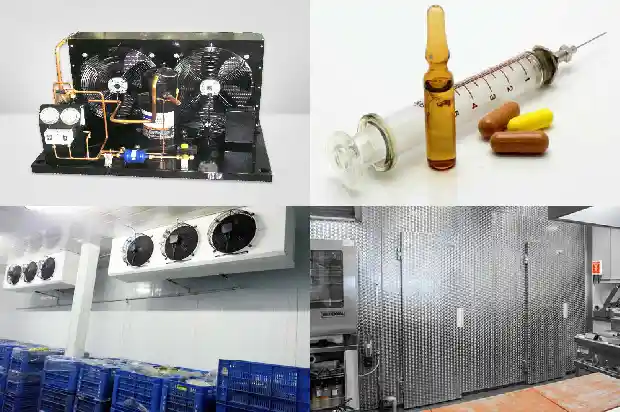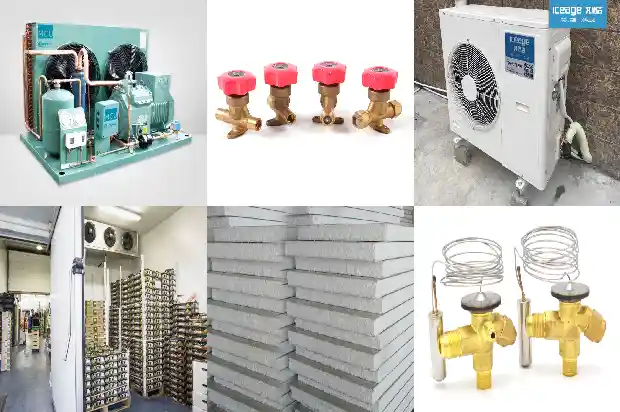HVAC Design | Basics of Cooling Towers
2025-01-14
Cooling towers are devices that use the contact between water and air to dissipate waste heat generated in industrial processes or refrigeration and air - conditioning systems through evaporation. In industrial production or refrigeration processes, waste heat generally needs to be removed by cooling water. A certain amount of water is drawn from natural water bodies such as rivers, lakes, and seas as cooling water. The cooling process equipment absorbs waste heat, raising the water temperature, and then the water is discharged back into rivers, lakes, or seas. This cooling method is called once - through cooling. When once - through cooling conditions are not available, cooling towers are required for cooling. The function of a cooling tower is to exchange heat between the cooling water carrying waste heat and the air inside the tower, transferring the waste heat to the air and releasing it into the atmosphere.
I. Basic Working Principle of Cooling Towers - Drying
Dry (low - enthalpy) air is drawn by the fan and enters the cooling tower through the air inlet network. High - temperature water molecules with a high saturated vapor partial pressure flow towards the air with a lower pressure. Hot and humid (high - enthalpy) water is sprayed into the tower from the water - distribution system. When water droplets come into contact with air, on one hand, there is direct heat transfer between the air and water. On the other hand, due to the pressure difference between the water - vapor surface and the air, evaporation occurs under the action of pressure. Up to now, the latent heat of evaporation is carried away, taking the heat in the water away, that is, evaporative heat transfer, thus achieving the purpose of temperature reduction.
II. Working Process of Cooling Towers
Take the working process of a circular counter - flow cooling tower as an example:
Hot water from the main equipment room is pumped by a water pump at a certain pressure through pipes, horizontal pipes, curved pipes, and the central pipe to the water - distribution system of the cooling tower.
Under normal circumstances, the air entering the tower is dry air with a low wet - bulb temperature. There is a significant difference in the concentration of water molecules and kinetic energy pressure between the water and the air.
From the above analysis, it can be seen that evaporative cooling has nothing to do with whether the air temperature (usually referred to as the dry - bulb temperature) is lower or higher than the water temperature. As long as water molecules can continuously evaporate into the air, the water temperature will decrease. However, the evaporation of water into the air will not continue indefinitely.
When the air in contact with the water is unsaturated, water molecules continuously evaporate into the air. But when the air on the water - air contact surface reaches saturation, water molecules can no longer evaporate and are in a state of dynamic equilibrium. The number of water molecules evaporating out is equal to the number of water molecules returning from the air to the water, and the water temperature remains unchanged. Thus, it can be seen that the drier the air in contact with the water, the easier the evaporation is, and the easier it is to reduce the water temperature.
Hot water from the main equipment room is pumped by a water pump at a certain pressure through pipes, horizontal pipes, curved pipes, and the central pipe to the water - distribution system of the cooling tower.

Under normal circumstances, the air entering the tower is dry air with a low wet - bulb temperature. There is a significant difference in the concentration of water molecules and kinetic energy pressure between the water and the air.

From the above analysis, it can be seen that evaporative cooling has nothing to do with whether the air temperature (usually referred to as the dry - bulb temperature) is lower or higher than the water temperature. As long as water molecules can continuously evaporate into the air, the water temperature will decrease. However, the evaporation of water into the air will not continue indefinitely.
When the air in contact with the water is unsaturated, water molecules continuously evaporate into the air. But when the air on the water - air contact surface reaches saturation, water molecules can no longer evaporate and are in a state of dynamic equilibrium. The number of water molecules evaporating out is equal to the number of water molecules returning from the air to the water, and the water temperature remains unchanged. Thus, it can be seen that the drier the air in contact with the water, the easier the evaporation is, and the easier it is to reduce the water temperature.
III. Classification of Cooling Towers
IV. Composition of Cooling Towers
- Water - spraying Packing
The water (hot water) that needs to be cooled is splashed into water droplets or formed into a water film multiple times to increase the contact area and time between water and air, promoting the heat exchange between water and air. The cooling process of water mainly takes place in the water - spraying packing.
- Water - distribution System
The hot water is evenly distributed over the entire water - spraying packing. Whether the hot water is evenly distributed has a great impact on the cooling effect. If the water distribution is uneven, it will not only directly reduce the cooling effect but also cause some cooling water droplets to splash and drift out of the tower. - Ventilation Equipment
In mechanical - draft cooling towers, a ventilator is used to generate the expected air flow to ensure the required cooling effect. - Air - distribution Device
Devices such as air inlets, louvers, and air - guiding plates are used to guide the air to be evenly distributed across the entire cross - section of the cooling tower. - Ventilation Duct
The function of the ventilation duct is to create good aerodynamic conditions, reduce ventilation resistance, and send the hot and humid air discharged from the cooling tower to a high altitude to reduce the return of hot and humid air.
The ventilation duct of a mechanical - draft cooling tower is also called a wind tunnel. The ventilation duct of a natural - draft cooling tower with a wind tunnel plays the role of ventilation and sending the hot and humid air to a high altitude. - Water Eliminator
It separates the water droplets carried in the discharged hot and humid air from the air, reducing the loss of escaped water and the impact on the surrounding environment. - Tower Body
The external enclosure structure of the cooling tower. The tower bodies of mechanical - draft cooling towers and natural - draft cooling towers with a wind tunnel are closed, playing the functions of support, maintenance, and organizing the appropriate air flow. The tower body of an open - type cooling tower is open along the tower height to allow natural wind to enter the tower. - Collection Basin
It is located at the lower part of the cooling tower to collect the cooling water falling from the water - spraying packing. Sometimes, the collection basin also has a certain reserve volume to regulate the flow rate. - Water - conveying System
The inlet pipe sends hot water to the water - distribution system. A valve is set on the inlet pipe to adjust the water inflow of the cooling tower. The outlet pipe sends the cooled water to the water - using equipment or the circulating water pump. In the collection basin, a make - up water pipe, a blow - down pipe, an overflow pipe, and a drain pipe are also installed. When necessary, a connecting pipe can also be set between multiple cooling towers. - Other Facilities
Including access doors, maintenance ladders, walkways, lighting, electrical control, lightning protection devices, and flight - obstacle signs set when necessary. Sometimes, test components for the cooling tower are also set for testing needs.
The different combinations of the above - mentioned components form various types and uses of cooling towers: open drip - type cooling towers, natural - draft cooling towers with a wind tunnel, induced - draft (or forced - draft) counter - flow cooling towers, induced - draft cross - flow cooling towers, etc.
V. Application Scope of Cooling Towers
Waste heat generated in industrial production or refrigeration processes generally needs to be removed by cooling water. The function of a cooling tower is to exchange heat between the cooling water carrying waste heat and the air inside the tower, transferring the waste heat to the air and releasing it into the atmosphere.
For example, in a thermal power plant, the boiler heats water into high - temperature and high - pressure steam, which drives the steam turbine to make the generator generate electricity. The exhaust steam after the steam turbine has done work is discharged into the condenser, exchanges heat with the cooling water, and condenses into water. Then, the water is pumped back to the boiler for recycling. In this process, the waste heat of the exhaust steam is transferred to the cooling water, raising the water temperature. The cooling water carrying waste heat transfers the heat to the air in the cooling tower and is discharged into the atmospheric environment from the wind tunnel.
The application scope of cooling towers: It is mainly applied in fields such as air - conditioning cooling systems, refrigeration series, injection molding, leather processing, foaming, power generation, steam turbines, aluminum profile processing, air compressors, and industrial water cooling. The most applications are in the air - conditioning cooling, refrigeration, and plastic chemical industries.
For example, in a thermal power plant, the boiler heats water into high - temperature and high - pressure steam, which drives the steam turbine to make the generator generate electricity. The exhaust steam after the steam turbine has done work is discharged into the condenser, exchanges heat with the cooling water, and condenses into water. Then, the water is pumped back to the boiler for recycling. In this process, the waste heat of the exhaust steam is transferred to the cooling water, raising the water temperature. The cooling water carrying waste heat transfers the heat to the air in the cooling tower and is discharged into the atmospheric environment from the wind tunnel.
The application scope of cooling towers: It is mainly applied in fields such as air - conditioning cooling systems, refrigeration series, injection molding, leather processing, foaming, power generation, steam turbines, aluminum profile processing, air compressors, and industrial water cooling. The most applications are in the air - conditioning cooling, refrigeration, and plastic chemical industries.
Related Articles
- Detailed Explanation of HVAC Pipeline Integration and Pipe Shaft Layout
- 【HVAC Design Summary】 - Free Cooling with Cooling Towers
- Obscure Knowledge of Static Pressure, Dynamic Pressure, Latent Heat and Sensible Heat in the HVAC Industry
- Common Faults of HVAC Fan Coil Units
- Myths about "condensate water" in HVAC construction. Know more
- Common Terms in HVAC
- Fin Spacing Design of Cooler and Several Knowledge Points of Defrosting in Cold Storage
- Precautions for Cold Storage Design
- Essential Basics for Maintenance, Debugging of Refrigeration and Air - conditioning Systems
- Cleaning Procedures and Methods for Cooling Towers and Heat Exchangers
- Basic Knowledge of Cooling Towers
- How to Choose between Open - type and Closed - type Cooling Towers?
- Introduction to the Cleaning Processes and Methods of Heat Exchangers and Cooling Towers
- 4 Points on Causes of Water Leakage in Closed Cooling Towers
